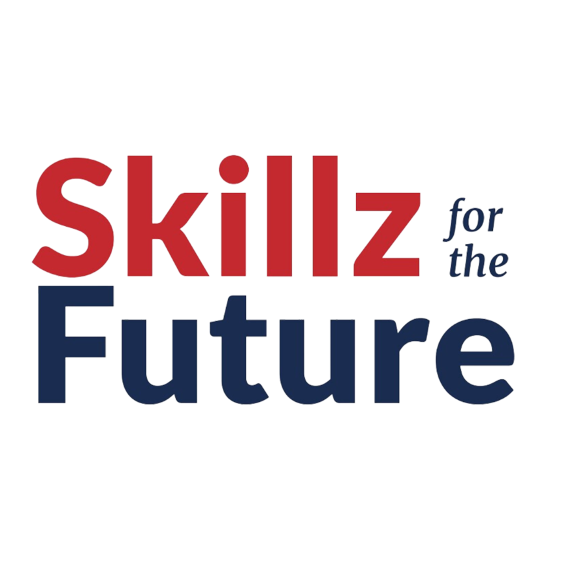Bundle Overview

1. Navigate Your Business Landscape
Having a keen business acumen is more critical than ever. Recent challenges, including economic uncertainties and supply chain disruptions, highlight the need for leaders and businesses to elevate their understanding and decision-making skills. Here, we explore practical steps to build and enhance your business acumen, ensuring sustained success.
Starting with a solid foundation in practical, hands-on learning can significantly enhance your business acumen. The dynamic nature of business requires leaders and managers to develop critical thinking and problem-solving skills. Hands-on training, especially through gamification and simulations, proves to be an effective strategy. Studies show that game-based learning increases engagement and retention, providing a tangible and easily understandable approach to business acumen.
Irrespective of your experience level, continuous learning is key for entrepreneurs and ambitious employees alike. Finding a mentor, whether within your company or from the broader business community, can provide invaluable insights. Successful mentors, especially those who have weathered economic challenges and embraced innovation, offer guidance and real-world perspectives. Learning from their experiences helps sharpen your business acumen and encourages ongoing personal and professional development.
Even with a dedicated Chief Financial Officer (CFO), understanding your business's financial intricacies is crucial. A comprehensive understanding of transactions, balance sheets, profit, turnover, and operating margins empowers you to make informed decisions.
Digging deep into your company's finances, regardless of delegation, fosters practical business acumen and a deeper comprehension of day-to-day operations.
Customers are the heartbeat of any business, shaping product offerings, pricing strategies, and communication channels. Listening to customer feedback, both external and internal, is a goldmine of insight. Beyond traditional entrepreneurs and economists, customers provide real-world perspectives on your business challenges and potential solutions. Utilise data analysis, surveys, and focus groups to gain a nuanced understanding of your business, enhancing your overall business acumen.
Even with the contemporary cutting-edge simulations, books remain timeless sources of wisdom. Establishing a library of business acumen-building books allows you to glean insights from seasoned authors and entrepreneurs. Select books tailored to your entrepreneurial journey and industry, providing a well-rounded perspective on the importance of business acumen and strategies for consistent development.
Building your business acumen requires a multifaceted approach. By embracing hands-on learning, seeking mentorship, understanding financial intricacies, listening to customers, and drawing wisdom from books, you can navigate the complexities of the current commercial landscape with confidence and resilience. Remember, the pursuit of business acumen is a continuous journey, and these steps serve as guideposts on your path to sustained success.
2. Strategic Thinking As Logical Approach to Success
Strategic thinking often appears shrouded in mystery, reserved for a select few. It's a term that finds its way onto many CVs and LinkedIn profiles, particularly for those with leadership aspirations. But what exactly is strategic thinking, and how can you develop this coveted skill set?
At its core, strategy involves determining your destination, charting the course to get there, and then taking decisive action. Now, let's delve into the steps to develop strategic thinking skills without the mystique.
1. Know Your Starting Point
Every journey begins with a clear understanding of where you currently stand. Much like the Grand Old Duke of York couldn't move downhill until he had ascended, gather concrete information about your current position. Avoid relying on anecdotes; demand evidence. This is the foundation upon which your strategic thinking will unfold.
2. Envision Your Future
With a solid understanding of your present, envision your ideal future position. Whether it's five, ten, or one year from now, consider it in detail. Utilise visualisation techniques or simply dedicate time to thoughtful reflection. Aim high and be specific. Identify not just what you want but also what you don't want. Put your thoughts on paper for added clarity.
3. Prioritise Your Goals
From your ideal future position, prioritise what truly matters. Pare down the essential elements to the core, emphasising the top three or five issues. Distinguish between crucial details and those that don't significantly impact your goals. The detailed groundwork from the previous step helps you pinpoint the aspects that truly hold importance.
4. Establish Intermediate Milestones
Chart the course from your current position to the envisioned future. Identify intermediate milestones – achievements rather than actions – for one, two, or three years. Focus on the tangible progress you need to make. This strategic approach ensures you're progressing toward your ultimate goal in a structured manner.
5. Develop Action Plans
Now, translate your milestones into actionable steps. Define what needs to be done to reach your first intermediate milestone and then proceed to subsequent ones. These are the practical tasks that bridge the gap between your current position and your envisioned future.
The Ongoing Challenge: Keeping Your Strategy on Track
Strategic thinking doesn't end with a well-crafted plan; it extends to execution. The mark of a strategic thinker is their ability to align every decision with their overall strategy. Regularly review your strategy – perhaps every six months to a year – to ensure it aligns with your goals. During decision-making, assess if potential outcomes fit into your strategy; if not, reconsider.
In both personal and professional realms, strategic thinking demands periodic reflection. Whether through company away-days or personal moments with a cup of tea, revisit your strategy. Adapt it to changes in your life or business landscape, ensuring it remains a relevant guide to your journey.
In essence, strategic thinking is not an enigmatic art but a logical process rooted in self-awareness and goal orientation. Regularly investing time in strategic thinking ensures you stay on track, turning your aspirations into reality in both life and business.
3. Risk Management Simplified
Risk management often appears as a complex field, with countless books and consultants dedicated to guiding businesses through its intricacies. However, beneath the surface, is risk management truly as complicated as it seems?
In essence, risk management involves contemplating potential pitfalls, evaluating their likelihood and impact, and taking proactive measures to either prevent the problem or mitigate its consequences. Let's demystify risk management and break it down into practical steps for a successful strategy.
1. Identify Potential Risks
Begin by brainstorming and jotting down every conceivable risk, big or small, that could affect your project or business. This exhaustive approach helps capture diverse perspectives. Consider grouping ideas into themes for a clearer overview and to identify overarching risks. This comprehensive list serves as the foundation for effective risk management.
2. Set a Date for Risk Occurrence
Assign a date by which each risk is expected to either occur or no longer be a threat. Avoid generic terms like 'Ongoing'; aim for specificity. This step ensures a timeline for assessing and addressing each risk, enhancing your strategic planning.
3. Quantify Risks
Evaluate risks on a scale of 1 to 5 for likelihood and impact. Engage in discussions to establish a shared understanding of each value. For instance, define what a '5' in impact signifies. Multiply the likelihood by impact to derive an overall rating from 0 to 25. Implement a traffic light system: Red for high-risk (18 and above), Amber for moderate (10–18), and Green for low risk (below 10). This visual aid guides focus and prioritisation.
4. Mitigation Strategies
Explore four main mitigation strategies: Acceptance, Avoidance, Limitation, and Transference. Acceptance acknowledges the risk without active mitigation, suitable for low-impact or unlikely scenarios. Avoidance involves extensive efforts to eliminate the risk, typically for high-impact, near-certain events. Limitation aims to reduce either likelihood or impact, representing a balanced approach. Transference involves transferring the risk to another entity capable of handling it. Choose the strategy aligned with each risk's characteristics.
5. Re-assess and Re-quantify
After determining mitigation strategies, reevaluate each risk. How much does the mitigation reduce likelihood and impact? Recalculate overall ratings. Any risks remaining in the Red or Amber zone require further mitigation actions.
6. Assign Responsibility
Designate a single owner for each risk. This person ensures mitigation efforts are executed and is accountable to the Board or project manager. Ownership shouldn't be assigned to absent individuals. Ensure key stakeholders actively involved in risk discussions take ownership.
7. Periodic Reviews
Regularly review the risk register every few months. Assess progress on mitigation efforts, review the relevance of existing strategies, and consider additional actions if necessary. Identify risks that have passed their 'sell-by' date and can be closed or those that have transitioned into issues and should move to the 'Issues list.'
8. Manage Issues
Maintain an active 'issues list' alongside the risk register. This list includes risks that have materialised into issues and outlines how they are being managed. The approach may align with the original mitigation or require tailored actions based on the realised event.
Embrace Risk Management as a Strategic Imperative
Lastly, it's crucial to emphasise that an impeccably crafted risk analysis holds little value if not acted upon. Embed risk 7
management into your organisation's strategy at all levels. Make it an integral part of your decision-making process, encouraging open conversations about potential challenges and preventive measures. Ignoring this aspect can undermine even the most meticulous risk analysis.
By simplifying the risk management process and incorporating it seamlessly into your organisation's fabric, you empower yourself to tackle challenges proactively, fostering a culture of resilience and strategic foresight.
4. Effective Communication to Bridge Generational Divides
Workplaces are usually very diverse these days, where Baby Boomers, Generation X, and Millennials coexist. Due to this workplace scenario, effective communication can often be challenging. The clash of cultural, economic, and social differences among generations often leads to misunderstandings, miscommunication, and potential conflicts. Navigating this generational maze is crucial for maintaining productivity, ensuring a positive work environment, and building trust.
Understanding the nuances of each generation is key to fostering a workplace culture that values diverse perspectives. Let's explore the characteristics of Baby Boomers, Generation X, and Millennials, and discover strategies to enhance intergenerational communication.
The Mosaic of Generations
Baby Boomers: Tradition in Transition
• Born between 1946 and 1964, Baby Boomers exhibit a strong work ethic and dedication, often working beyond retirement age.
• Limited exposure to digital technology compared to younger generations, influencing communication
preferences.
• Value recognition through promotions and raises, emphasising their commitment to the workplace.
Generation X: Bridging the Gap
• Born between 1965 and 1980, Generation X serves as a bridge between Baby Boomers and Millennials. • Comfortable with technology but cherishes face-to face interactions.
• Values independence, resilience, and a balance between work and personal life.
Millennials: Digital Prowess with a Quest for Purpose • Born between 1981 and 1996, Millennials are digital natives, fluent in social media and technology.
• Quick to leave jobs for better opportunities if they feel undervalued or stagnant.
• Seek fulfilment and purpose in their work,
emphasising a work-life balance.
Why Businesses Need to Navigate Intergenerational Communication
Effective intergenerational communication is more than a workplace nicety; it's a strategic imperative. Businesses benefit by:
• Boosting productivity through improved collaboration. • Enhancing employee satisfaction and engagement. • Fostering a positive work environment that attracts and retains top talent.
• Strengthening the company's adaptability to changing dynamics in the workforce.
Strategies for Effective Intergenerational Communication
Dismantle Stereotypes through Education
• Encourage co-workers to treat each other as individuals, dispelling generational stereotypes.
• Foster understanding of communication differences and promote embracing diversity.
• Facilitate skill-building sessions, such as social media training for Baby Boomers and face-to-face
communication for Millennials.
Revamp Company Culture for Inclusivity
• Evaluate company events and policies to ensure they cater to employees of all ages.
• Design events that appeal to a diverse audience, avoiding unintentional exclusion.
• Showcase inclusivity in business practices, reflecting respect for each generation's values.
Embrace Diverse Communication Methods
• Advocate for a mix of communication methods, including email, instant messaging, and both group and individual meetings.
• Highlight the effectiveness of various communication channels to cater to diverse preferences.
• Encourage open dialogue on individual
communication styles, fostering mutual understanding.
Understanding the importance of effective intergenerational communication and its implications for businesses is the first step toward creating a harmonious and productive workplace. By acknowledging and celebrating the diversity of each generation, businesses can build a resilient and adaptable workforce ready to tackle the challenges of today and tomorrow.
5. Building a Sustainable Business
Many businesses are recognising that sustainability is not just a buzzword but a vital aspect of their operations. This article aims to shed light on how businesses can integrate sustainability seamlessly into their DNA, ensuring a harmonious balance between profits, planet, and people.
Decoding Sustainability in Business: The Three Pillars
Before delving into the "how," let's understand the "what." Sustainability in business revolves around three interconnected pillars:
Economic Sustainability
• The crux is financial viability. Commitments made by a business must be economically feasible; otherwise, they risk compromising their survival.
• Businesses need to generate enough revenue to cover costs and provide returns to stakeholders. Without financial sustainability, a business cannot thrive.
Environmental Sustainability
• Balancing resource usage and waste management is the essence of environmental sustainability.
• Responsible resource utilisation, coupled with eco friendly waste disposal practices, ensures that a business does not contribute to long-term environmental
degradation.
Social Sustainability
• It encompasses fair treatment of employees and ethical interactions with stakeholders, customers,
suppliers, and the community.
• Social sustainability values concepts like fair trade, equity, community support, and fostering positive
employee relations.
Together, these pillars form the foundation of sustainable business practices, often referred to as the "profits, planet, and people" approach.
The Benefits of Embracing Sustainability
Contrary to the historical perception that social and environmental sustainability are at odds with economic sustainability, businesses are waking up to the idea that they are not mutually exclusive. In fact, integrating sustainability offers several advantages:
Direct Financial Savings
• A surprising reality is that sustainable practices often translate into direct cost savings. From reducing
packaging waste to conserving energy, sustainable choices can be economically prudent.
• Businesses can cut costs while aligning with environmentally friendly practices, creating a win-win scenario.
Attracting Customers
• In an era where conscious consumerism is on the rise, customers actively seek businesses with sustainable practices.
• Early adopters of sustainability are likely to gain market share as consumers increasingly prioritise eco friendly and socially responsible businesses.
Stronger Reputation for Investors
• Investors are increasingly drawn to companies committed to sustainability. A robust environmental and social record enhances a company's appeal for
investment.
• Sustainability is seen as a marker of a company's forward-thinking approach and adaptability to changing market dynamics.
Attracting and Retaining Talent
• Businesses championing sustainability become magnets for top talent. Employees prefer working for socially responsible companies, creating a rich pool of skilled professionals.
• A reputation for ethical and sustainable practices enhances the company's ability to attract and retain high caliber employees.
Keys to Sustainable Business Success
Achieving sustainability in business is not a mere checkbox; it requires a genuine commitment and specific attributes from owners and managers:
Genuine Belief in Sustainability
• Authenticity is paramount. Businesses must genuinely embrace sustainability, understanding that it goes beyond mere rhetoric.
• Successful sustainable businesses are founded on principles of ethical conduct and sustainability as an intrinsic part of their identity.
Ability to Plan for the Future
• Sustainability is inherently a long-term endeavour. Successful businesses plan years ahead, considering the future implications of their actions.
• Long-term investments, especially in industries like forestry, require a unique approach to decision-making that extends beyond immediate gains.
Willingness to Collaborate and Adapt
• While planning for the future, sustainable
businesses remain flexible and open to change.
• Collaboration with others, including suppliers and customers, is key. Sustainable businesses contribute to shared learning through cooperation and benchmarking.
Readiness to Embrace Change
• A hallmark of sustainable businesses is their ability to change when a better way is identified.
• Continuous improvement is a central tenet, and these businesses evolve by adopting innovative and sustainable practices.
Finding Your Path to Sustainability
As the belief in sustainable practices gains momentum, each business must chart its unique course toward sustainability. Even within the same sector, businesses make diverse decisions to achieve similar goals. The journey toward sustainability is a personal one, and this article serves as a foundation for your exploration. The road to sustainability is not a one-size-fits-all approach but a tailored endeavour that aligns with your company's values, goals, and vision.
- business
- business management
- problem solving
















